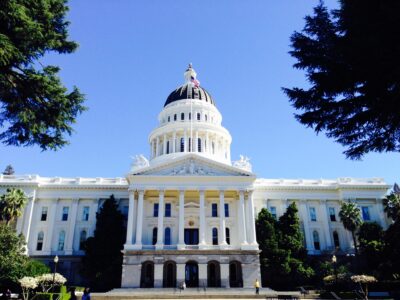Hey folks, let’s talk about something that’s been buzzing around the Golden State for quite some time now. Over a year back, the Little Hoover Commission—California’s independent state oversight agency—kicked off a series of public hearings. They were on a mission to dissect the California Environmental Quality Act (CEQA) and the love-hate relationship Californians have with this piece of environmental legislation. Now, some folks who are all about building more housing say CEQA is the bad guy in California’s affordable housing crunch. On the flip side, proponents argue that while CEQA might not be making a huge dent in housing availability, it’s a vital tool for communities that have been dealing with environmental justice issues for ages. If you’re looking for the skinny on the Commission and the whole debate around CEQA reform, there’s a solid overview out there to check out.
Unveiling the Little Hoover Commission’s Report
Well, today, the wait is over. The Commission has dropped its report, which claims to offer “targeted reforms.” But let me tell you, it’s anything but targeted. It’s the end result of a process that started on the right foot but then stumbled along the way. This is kind of a big deal because this report might be used as a roadmap for the folks who make the laws and policies in the state.
The report took its sweet time to arrive. What was meant to be a quick three-hearing chat over two months morphed into a five-hearing marathon spanning four months. We saw a parade of experts from all walks of the CEQA world come to Sacramento. They debated how CEQA meshes with environmental justice, the housing crisis, and California’s screaming need for better infrastructure. Each hearing was stacked with hours of public input, often spilling way past the scheduled time.
But after the last gavel fell, the Commission clammed up for months. When they finally got around to drafting the report, they wrapped it up during a snooze-fest of a business meeting on March 28, without giving the public a peek or a say before they sealed the deal.

The commissioners, before rubber-stamping the report, sounded a bit on the defensive and seemed to gloss over the fact that the public was left in the dark. Despite calls for a 60-day review window and pleas to make the draft public, the commissioners just shrugged it off. Not exactly the grand finale we were expecting after such a thoughtful start.
The Battle Over CEQA Reform
For those pushing for CEQA reform and those defending it, the Commission’s process was like the opening act for a bigger showdown happening in California’s courts, legislature, and the court of public opinion. The Commission might not have the power to enforce or legislate, but their two cents tend to sway lawmakers. And those lawmakers have been busy bees, proposing over 200 bills to tweak CEQA in the last few years, with 72 getting the green light.
There’s no shortage of reports and studies diving into CEQA’s impact on California, but finding one that’s not biased is like finding a needle in a haystack. We really need a no-nonsense report from a respected, impartial group, one that’s been through the wringer of public scrutiny and stakeholder involvement.
The process started off fair and intense. But despite the initial care and almost a year of anticipation, the final product is a bit of a hot mess. It kicks off with some level-headed analysis but then makes a hard left into a list of radical recommendations that don’t jive with the earlier parts of the document or the evidence it’s supposed to be based on.
The Jekyll and Hyde of the Little Hoover Commission’s Report
The report’s like a book with two authors who weren’t talking to each other. The main text is pretty thoughtful and balanced. It doesn’t lean much on the mountain of evidence the Commission gathered, mostly giving shoutouts to just a few experts. It pushes for “targeted and limited reforms” and gives CEQA props for its role in helping disadvantaged communities that have been dealt a bad environmental hand. It even highlights some success stories where CEQA has been the hero (you can find these tales over at the CEQA Works website).
The report also gives a nod to the fact that, despite all the CEQA exemptions the Legislature has cooked up, there’s not much hard evidence to back up the idea that taking more bites out of CEQA will solve California’s housing woes. It points to studies showing that a tiny slice of housing projects needed an environmental impact report and that only a fraction of those led to court battles. The report’s main text wraps up by suggesting the state should hold its horses and see how recent tweaks to the law pan out before making any major changes.
But then, out of left field, the recommendation section goes rogue, pitching a bunch of hefty reforms that are way out there compared to what the Legislature has even thought about. These suggestions are way off base from the main text and, frankly, a lot of the testimony and evidence the Commission chewed over during the hearings, most of which didn’t even make it into the final report. CEQA’s a hot potato, and seeing this well-thought-out process devolve into outlandish and baseless recommendations is a real letdown. One thing’s crystal clear: State policymakers should take the Commission’s advice with a hefty pinch of salt.
And a big shout-out to Gabriel Greif, the former Emmett Frankel Fellow, for his hefty contribution to the research and analysis during his fellowship. Couldn’t have done it without you, buddy.
Did you miss our previous article…
https://pardonresearch.com/?p=3583
